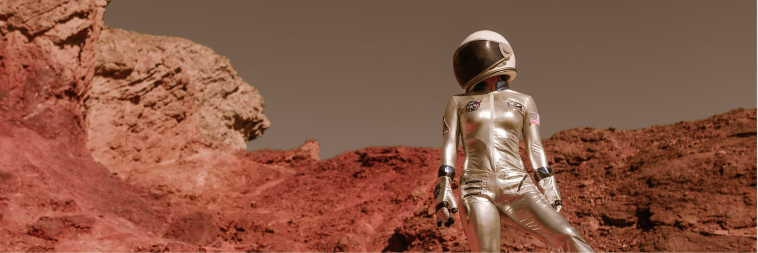Hey, is that a bear stuck on Mars?!

A new discovery on Mars will make many happy. On the neighboring planet, NASA’s Reconnaissance orbiter, which has been circling Mars since 2006 and recording its surface, this time sent a picture of a relief that looks like a bear’s head from afar, from the position of the spacecraft’s camera.
The picture was taken on December 12 last year with a high-resolution camera (HiRISE). Its goal is to enable a closer look at fresh Martian craters, the discovery of alluvial deposits, viscous flows and areas with breccia deposits.
This makes it possible to study the age of Martian features, search for sites for future Mars landings, and, in general, observe the Martian surface in much greater detail than has previously been done from orbit.
In early 2001, Delamere and A. McEwen from the University of Arizona proposed such a camera for the ‘Mars Reconnaissance Orbiter’ (MRO), and NASA accepted the proposal in November 2001.
The American public is in fact allowed to choose the location to shoot with the HiRISE camera!
For this reason, and because of the unprecedented access to the images by the general public – the camera was named the ‘People’s Camera’.
As you can see in the attached photo, the bear’s face consists of a V-shaped structure representing the nose, while the two craters above represent the eyes. There is also a circular shape that frames the head.
NASA/JPL-Caltech/University of Arizona, Public domain, via Wikimedia Commons
The details of this formation have not been investigated and it is only speculated that the “nose” is actually the opening of an ancient volcano with lava deposits around it.
This relief is an interesting example for psychologists, because their activity includes the ability of a person to connect individual features, lines or simply some geographical forms in his mind so that he gets a completely new image, one that otherwise has nothing to do with reality.
This phenomenon is called pareidolia.
It’s about seeing some forms that seem to you to represent a whole that otherwise doesn’t exist in reality.
There are many such examples, and for us the most interesting are the “astronomical” ones. First of all, it is the “Man on the Moon”. Namely, from the pattern made by the lunar seas and lunar plateaus, from ancient times it seemed to many people to see various figures, so some saw Cain and Abel, some a leopard, some a rabbit, then a woman, a frog, etc. depending on the traditions of the people.
HiRISE
The HiRISE camera is designed to view the surface features of Mars in more detail than has ever been possible before. Did you know that images can be viewed online, downloaded, or using the free HiView software?
In the late 1980s, renowned engineer and designer of space instruments and cameras Alan Delamere of the Californian military and civilian equipment manufacturing company ‘Ball Aerospace & Technologies’ began planning a high-resolution camera that would support a future project to collect samples and explore the surface on Mars.
In this way, it enables a better study of Martian channels and valleys, volcanic landforms, possible former lakes and oceans, sand dune fields such as Hagal and Nili Patera and other surface forms that exist on the surface of Mars.

